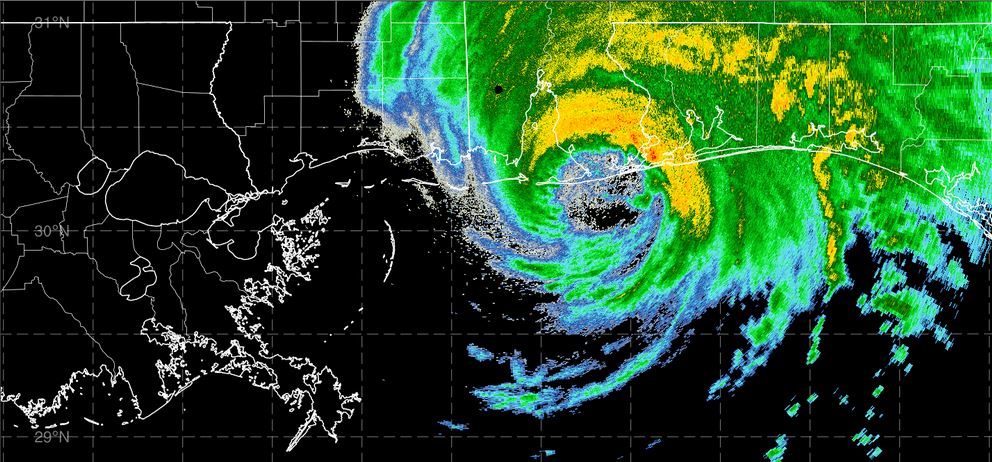–
Hurricane Sally was a Category 2 hurricane with 105 mph winds at landfall in Gulf Shores, Alabama (11 miles west of FL), but in rural farming regions of the Florida Panhandle it was not just the high winds, but the tremendous rainfall from this slow moving storm that caused devastation. The map below shows the National Weather Service (NWS) estimates for total rainfall over the past seven days (9/11 – 9/17/2020). NWS estimated that the areas in white received more than 20 inches, in purple 15-20″, pink 10-15″, and dark red 8-10″ over the past week leading up to and after landfall of Hurricane Sally.
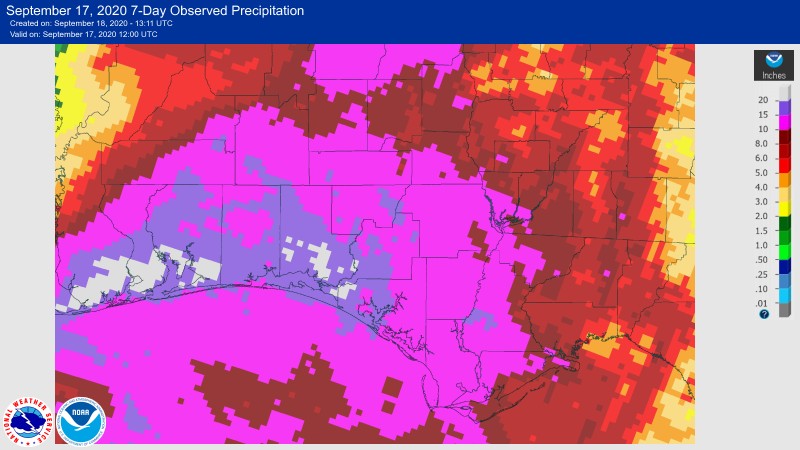
National Weather Service 7-day estimates for rainfall across the Florida Panhandle from Hurricane Sally.
–
Hurricane Sally hit just as Panhandle farmers were finishing corn harvest, beginning peanut harvest, and a few weeks away from cotton harvest. What had looked to be a promising harvest season, is now heartbreaking damage and losses. The following photos, taken on Thursday, September 17, 2020, show some of the crop damage in Escambia County from the wind and flooding.
–
Corn
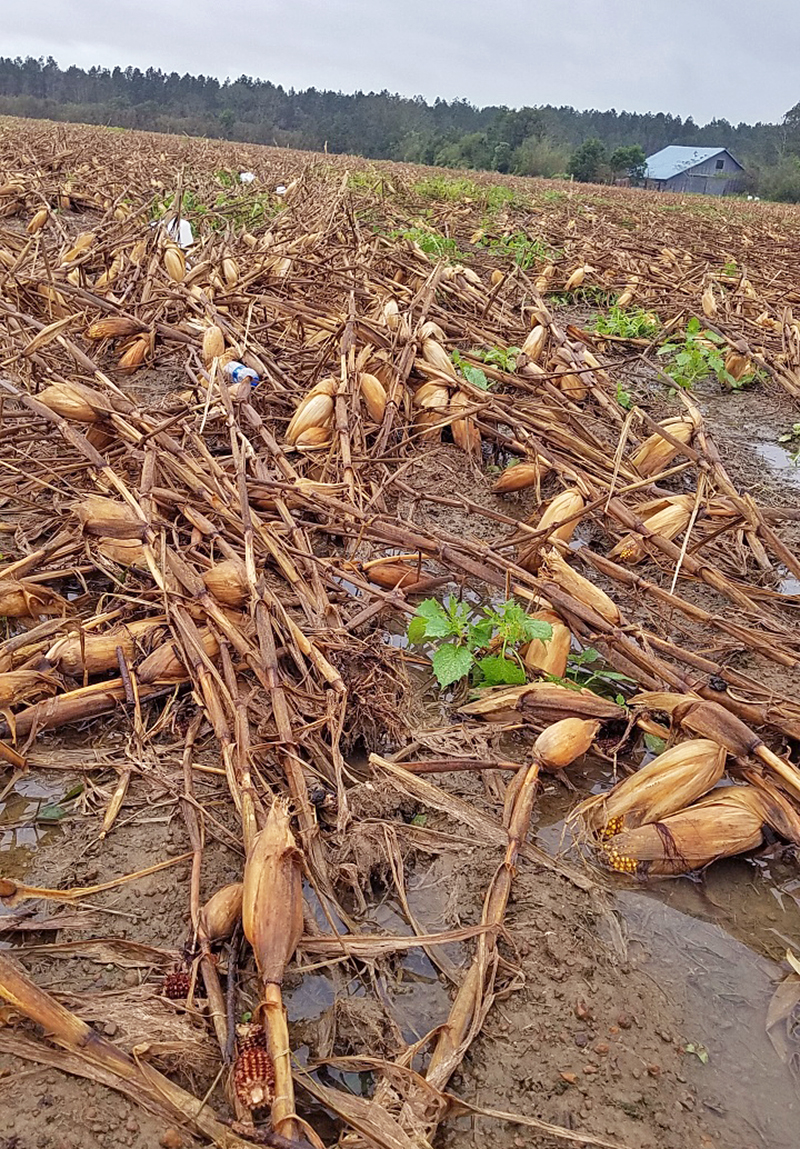
The hurricane interrupted corn harvest. The corn yet to be picked was blown down and destroyed in Escambia County. 9/17/20 Credit: Libbie Johnson, UF/IFAS.
–
Cotton
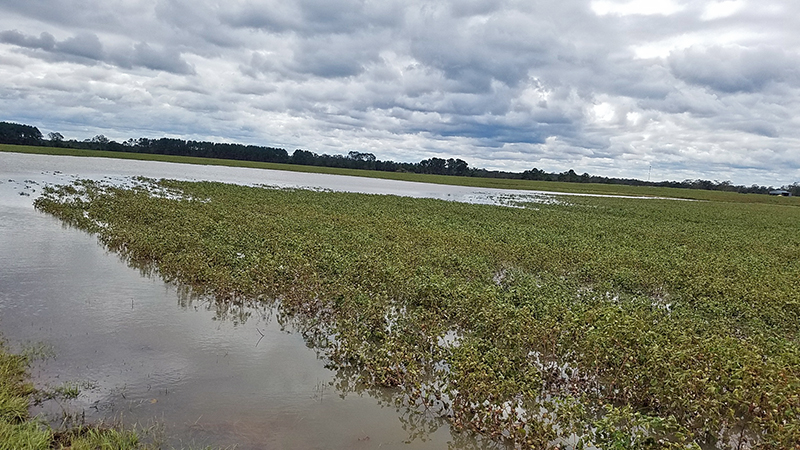
Many cotton fields were completely flooded in Escambia county. 9/17/20. Credit Libbie Johnson, UF/IFAS.
–
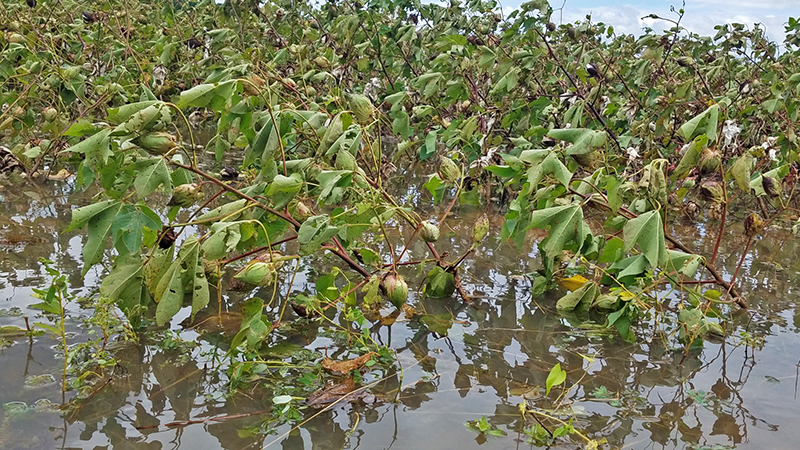
Flooded fields will reduce fertility as well as increase fungal diseases such as boll rot and hardlock even after the water finally drains off. 9/17/20 Credit Libbie Johnson, UF/IFAS
–
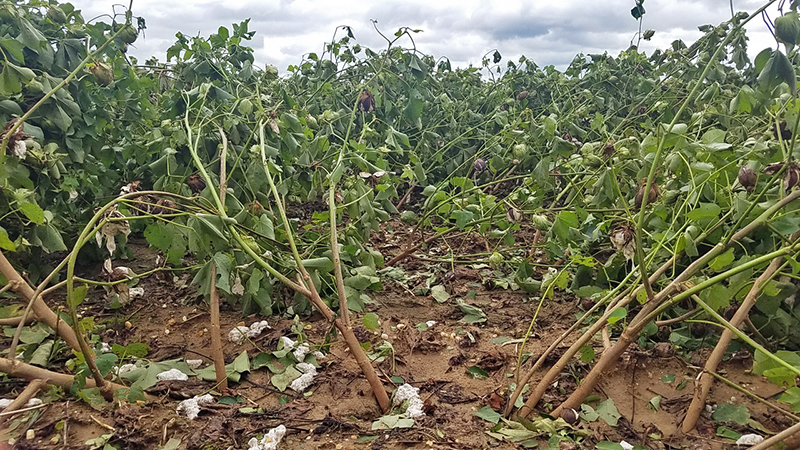
Even on higher ground, high winds, heavy rains, and saturated soils caused lodging that will make mechanical harvest very challenging. You can see cotton from bolls already open were knocked to the ground. 9/17/20 Credit: Libbie Johnson, UF/IFAS
–
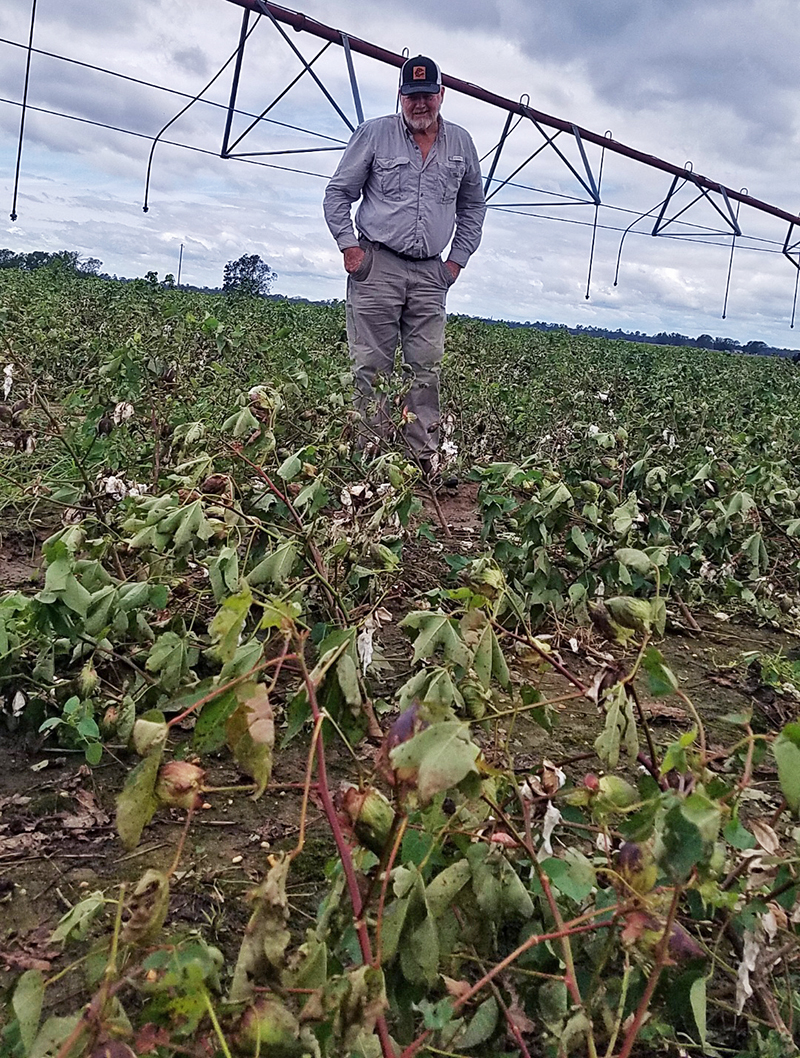
Sam Walker surveyed the damage to his cotton fields. He was disgusted by what he found as a promising season ended with major losses. 9/17/20 Credit: Libbie Johnson, UF/IFAS
–
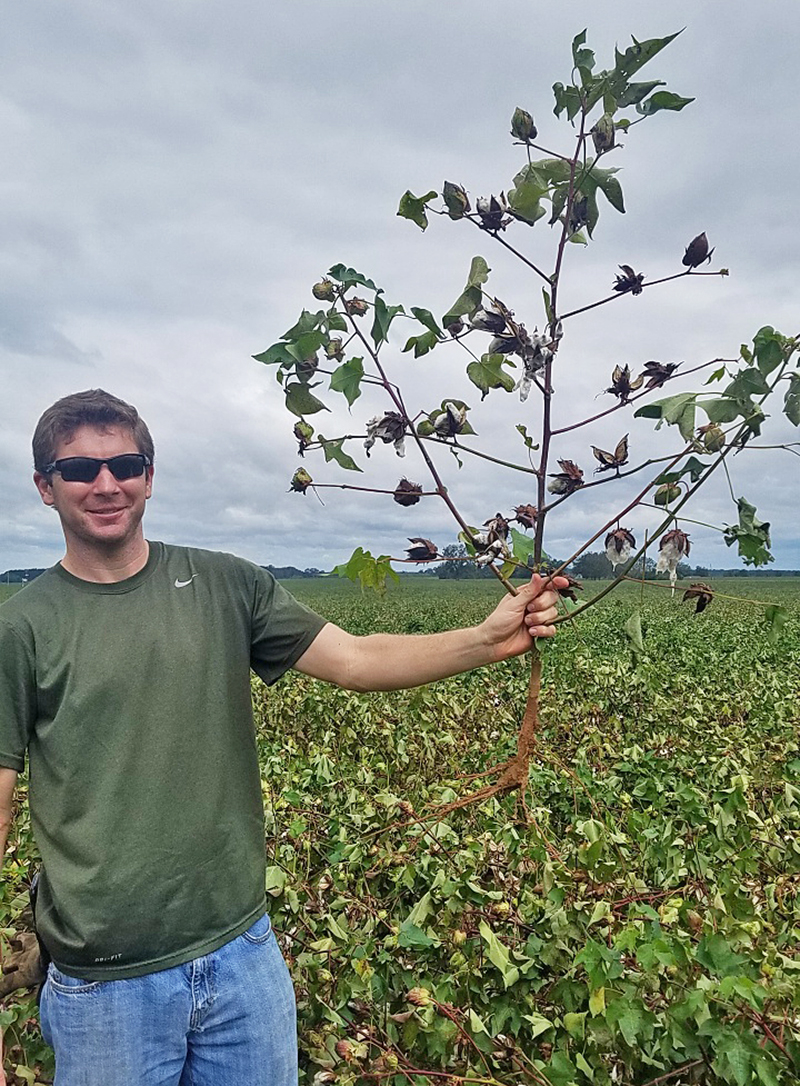
Scott Walker held up a saturated cotton plant to show damaged and missing mature bolls that were already open on the plant before the storm hit. The early maturing bolls are typically the highest yielding at harvest. 9/17/20 Credit: Libbie Johnson, UF/IFAS
–
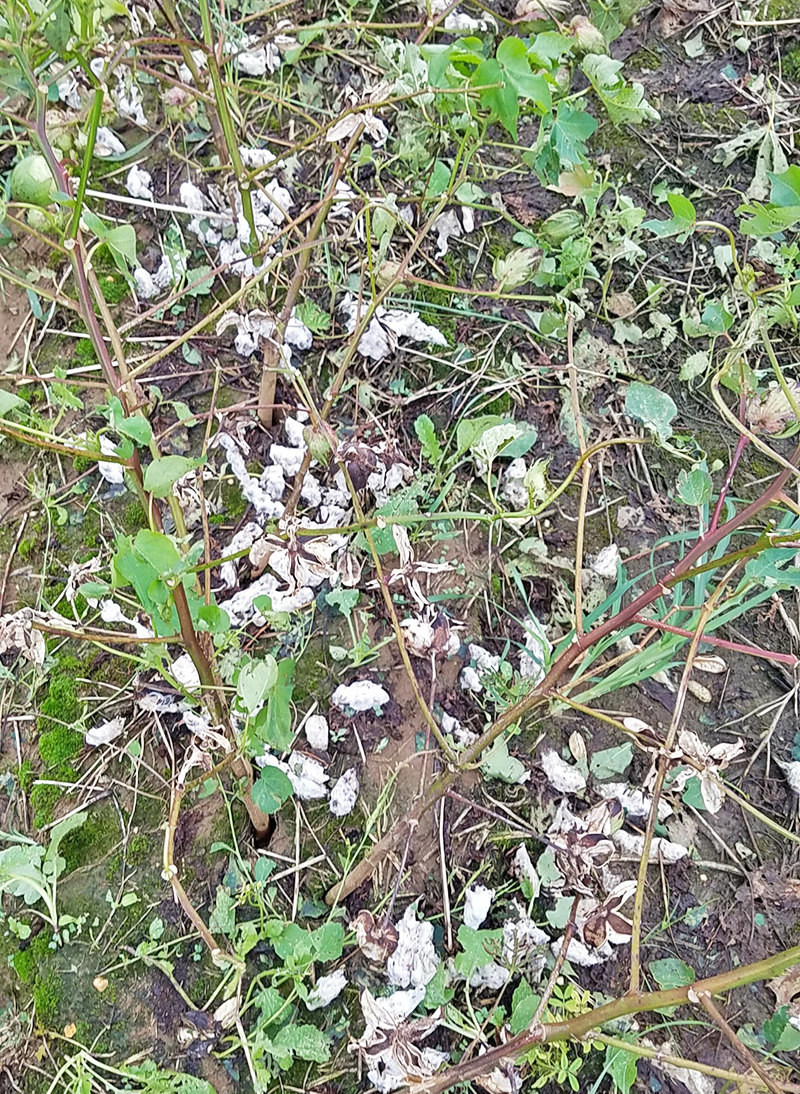
From above you can see the significant loss of cotton on the ground after the wind and rain pulled them from the open bolls. 9/17/20 Credit: Libbie Johnson, UF/IFAS
–
Peanuts
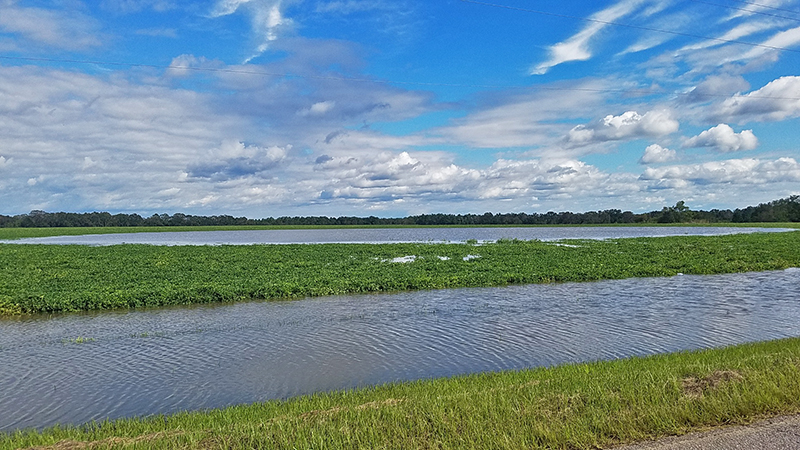
Peanut fields were also flooded in Escambia County. While peanuts are protected underground, it may take weeks for these fields to dry enough to dig, so the delay and the ensuing fungal diseases are a major concern. 9/17/20 Credit: Libbie Johnson, UF/IFAS
–
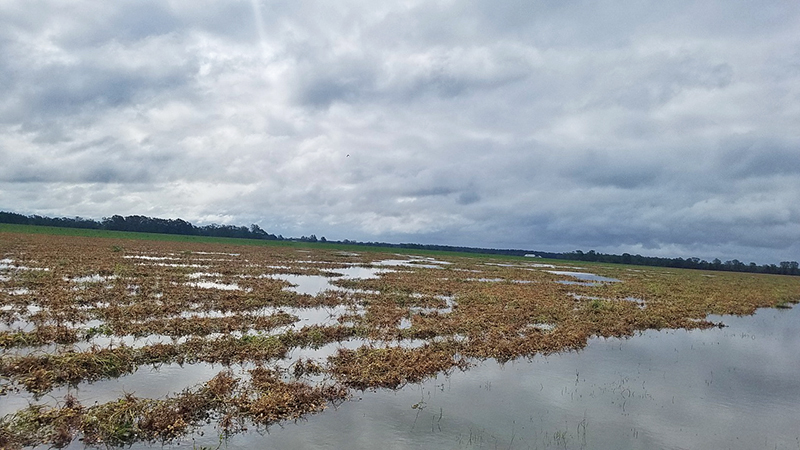
Escambia County farmers were able to dig more mature fields in advance of the storm, but it will take quite a while for this field to be dry enough to pick the peanuts from the vines. Yield and grade are certain to be reduced by the standing water. 9/17/20 Credit: Libbie Johnson, UF/IFAS
–
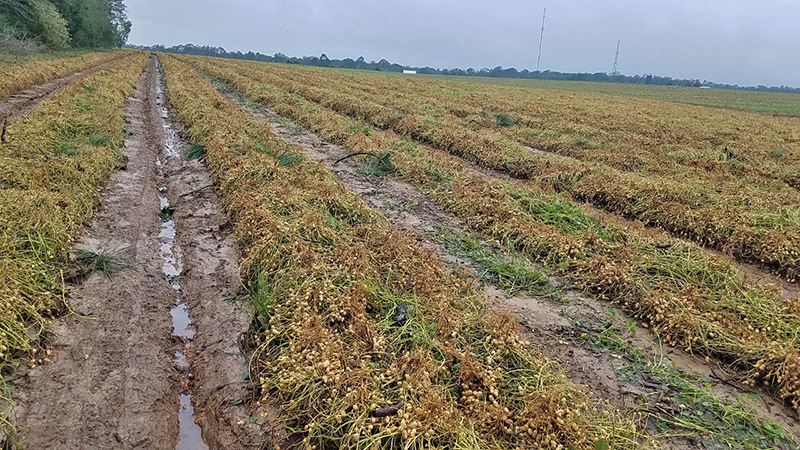
Some of the peanuts on higher ground can be salvaged, if the rains hold off long enough to dry out fields enough for harvest equipment. You can see there was a promising crop in this field before Hurricane Sally came ashore. 9/17/20 Credit Libbie Johnson, UF/IFAS
–
Wind Damage
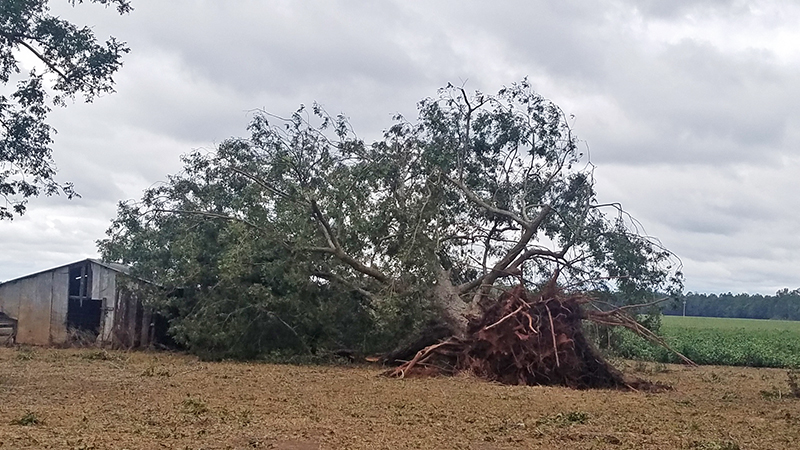
Although the wind damage was not as significant as with Hurricane Ivan (Cat 3 in 2004), there still were overturned trees and damage to farm structures in Escambia County due to Hurricane Sally’s high winds. 9/17/20 Credit: LIbbie Johnson, UF/IFAS
–
It will take weeks for saturated fields to drain and dry out enough to hold up heavy harvest equipment. Farmers in Escambia County may be able to salvage peanuts from the higher ends of fields. The cotton’s future is less certain, as wind and flooded fields not only cause cotton plants to lodge and mature cotton to fall to the ground, but diseases such as boll rot and hardlock will also take a toll on the bolls still remaining on the plants. While there may still be some fields to harvest in Escambia County, it certainly won’t be the bountiful harvest most farmers here were expecting. There will also be a major repairs required to restore fences, barns, and conservation structures damaged by Hurricane Sally.

